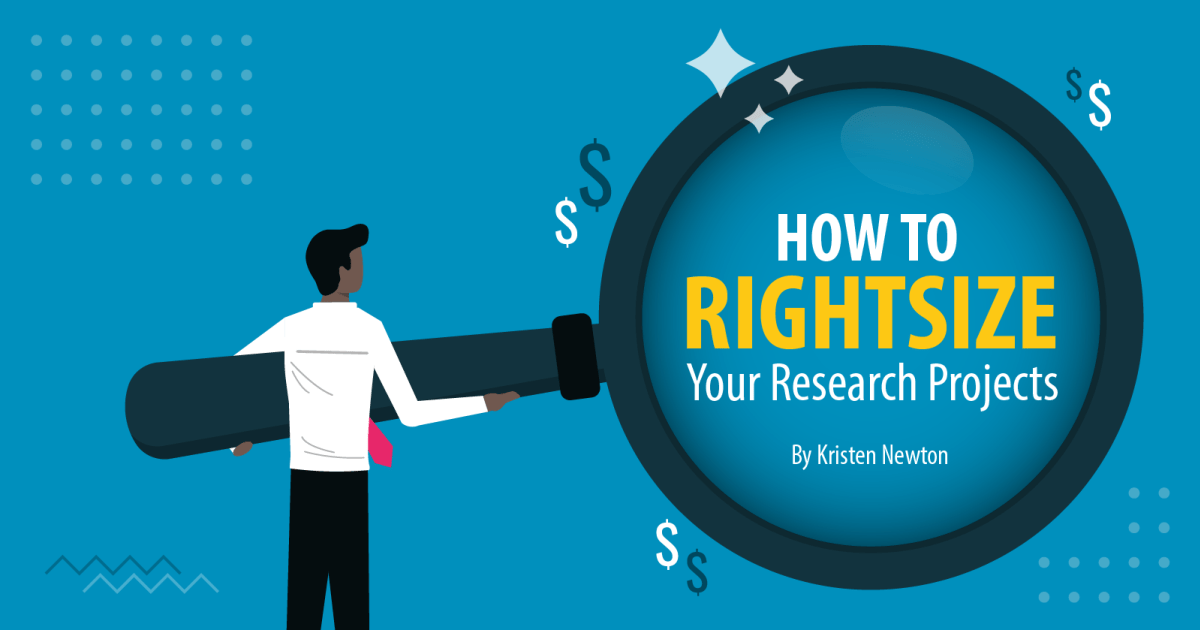By now, y’all should know that I love research. Not only is it my job, but it’s also one of my passions. I take great pleasure in running down rabbit holes to learn everything I can about any subject, from the obscure to the mundane.
I also love it when our clients love research. It’s fun and rewarding to share the excitement of learning new things–or confirming suspicions–with a client and using what we learn to solve problems.
However, there is such a thing as too much of a good thing. Research is a powerful facilitator for solving problems but it can also distract, destabilize, delay, and deter us from reaching our goals. I hate to admit it, but it is possible to love research a little too much–and if you do, it can hold up the rest of the project, kill your budget, and lead you into the dreaded state “analysis paralysis.”
How can you avoid these pitfalls? Here are four things to consider that will help you rightsize your research project.
- Start with the end in mind. As I said in a previous blog post, project success relies on being clear about your desired end state–not just for the research, but for the project overall. Knowing the ideal outcomes will help you write succinct research objectives. We can then map our findings to research objectives to make sure we have the answers necessary to advance the project to the next step.
- Use the “more is more” principle. The more complex or knotty a business problem is, the more research you probably need to do to understand how to fix it. Less complex problems can usually get by with less research, and use agile methodologies or even secondary research to identify best practices and solutions that others have used to solve similar challenges.
- When you hear hoofbeats, think horses, not zebras. If you don’t know this expression, it means that when searching for answers, you should consider the obvious possibilities before the less likely ones. If your research findings show similar patterns because you’re hearing the same thing over and over, that in itself is a finding–and potentially the answer you’re looking for. We all want that “aha!” moment when we get that nugget of new, unique information–the zebra of research findings, if you will. Just keep in mind that it may take a lot more research (and time and money) to find it.
- Research leads to the decision, but it can’t make the decision for you. Research is a formidable enabler that can give you the insights you need to weigh options and make smart, informed decisions. But it’s not the decision-maker–you are. Many times, a client will want to add more research to a project because they fear making the wrong decision, and information reduces that risk. However, as Jim Schleckser pointed out in his 2015 Inc. article, too much information also has risks. He asserts that you should make a decision when you have 75% of the information you need. Remembering this valuable advice can help you avoid “research bloat” and get to a decision confidently.
When it comes to rightsizing research, as my friend and colleague Holly Huntley likes to say, “Check yourself before you wreck yourself.” I hope these guidelines help you keep your research in check, so that you can get the answers you need without wrecking your project timeline or budget.
Need help planning your next research initiative? Contact LMD.

